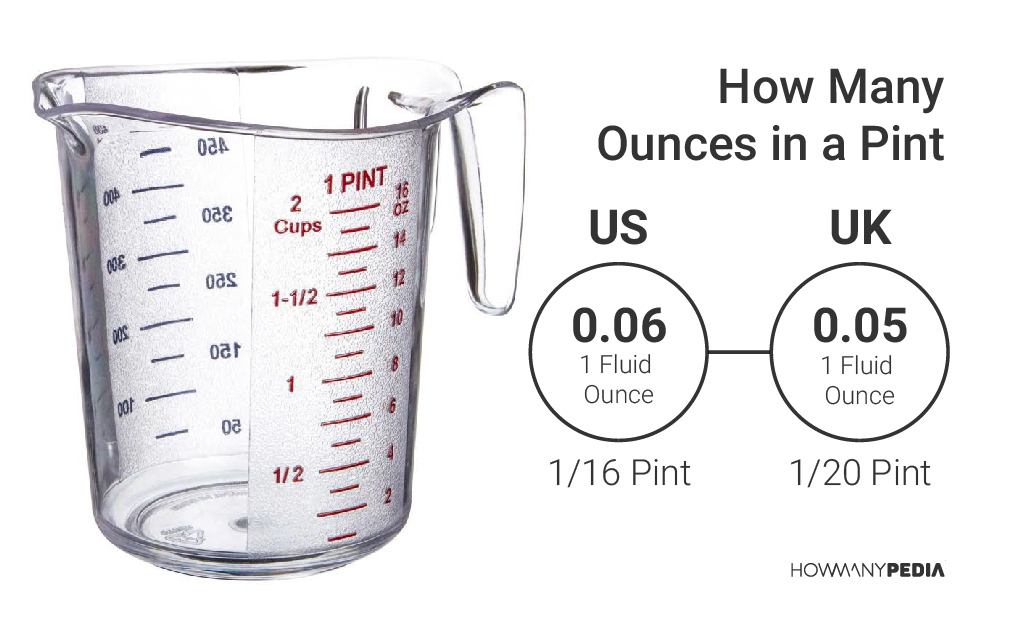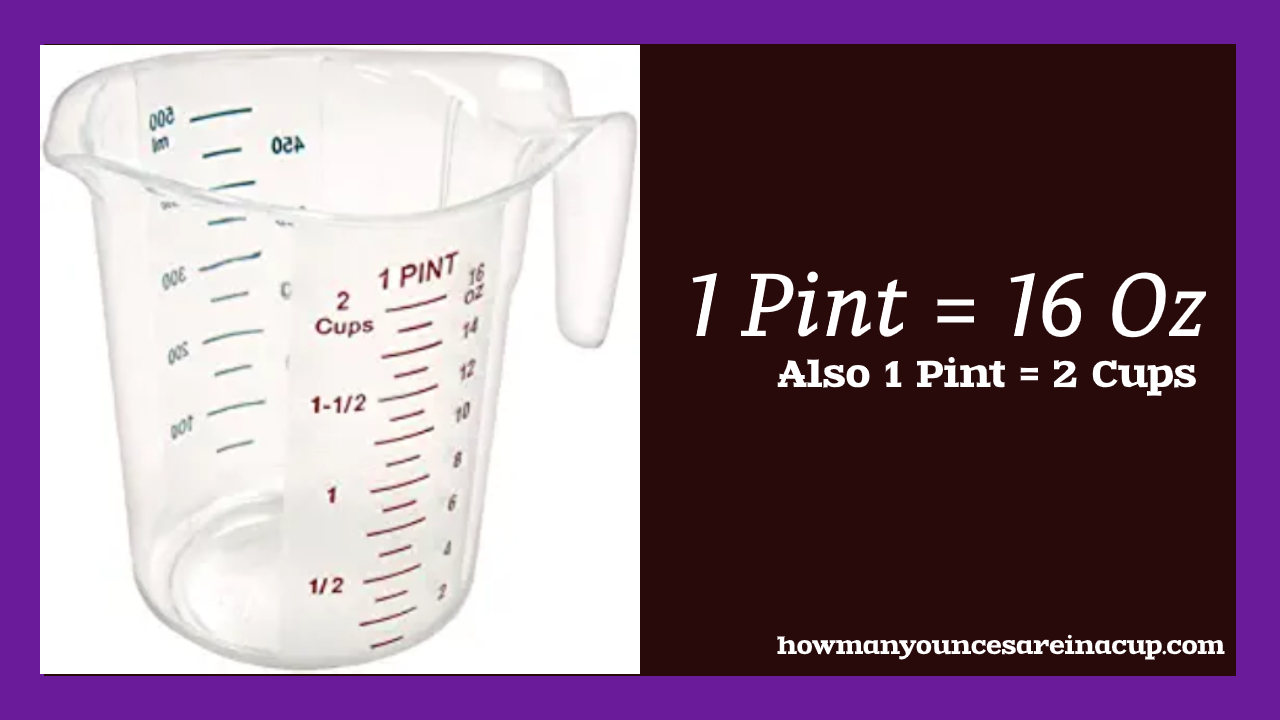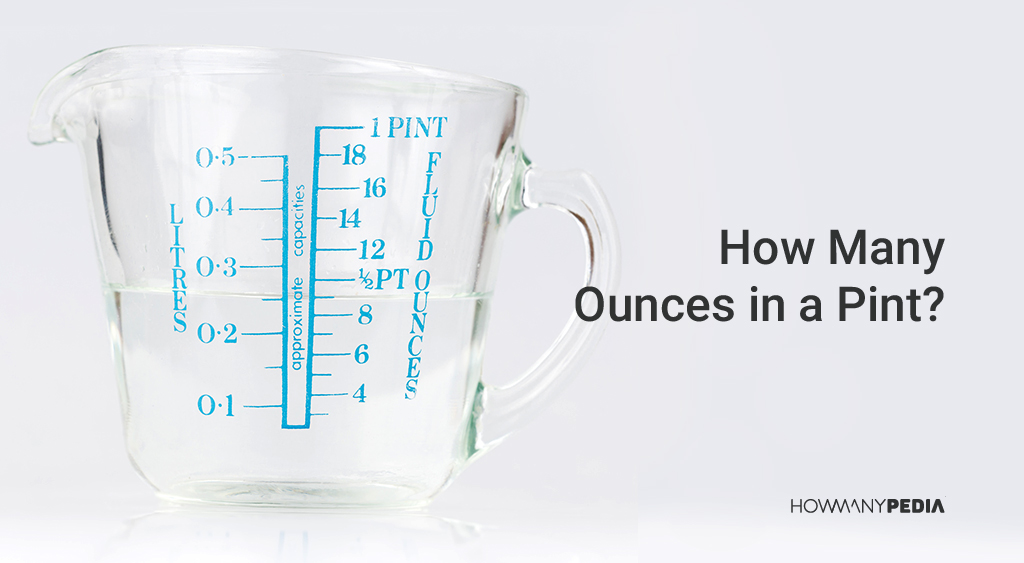Ounces Vs. Fluid Ounces & Pints: Conversions Made Easy
Ever find yourself perplexed by the difference between a fluid ounce and an ounce, or perhaps flummoxed when a recipe calls for pints and you only have fluid ounces? Understanding these seemingly simple units of measurement is crucial, especially in the world of cooking and baking, where precision is paramount for culinary success.
Navigating the world of measurement can feel like charting unknown waters. It is essential to comprehend these units to achieve the desired results in any culinary endeavor. From the subtle art of baking to the precise science of mixology, having a firm grasp on the conversions between ounces, fluid ounces, and pints is not just useful; it's essential.
| Unit | Definition | U.S. Equivalent | U.K. Equivalent |
| Fluid Ounce (fl oz) | A unit of volume, typically used for liquids. | 1/16th of a pint | 1/20th of an imperial pint |
| Ounce (oz) | A unit of weight or mass. | Varies depending on the substance (e.g., 16 oz = 1 lb) | Varies |
| Pint (pt) | A unit of volume. | 16 fluid ounces, 2 cups | 20 fluid ounces, slightly over 2 cups |
| Cup | A unit of volume, used in cooking and baking. | 8 fluid ounces | 9.6 imperial fluid ounces |
| Quart | A unit of volume. | 2 pints (32 fluid ounces) | 2 pints (40 fluid ounces) |
| Gallon | A unit of volume. | 4 quarts (128 fluid ounces) | 4 quarts (160 fluid ounces) |
For ease of use and a quick reference, a simple conversion table from pints to fluid ounces is as follows:
| Pints (pt) | Fluid Ounces (fl oz) |
| 1 pt | 16 fl oz |
| 2 pt | 32 fl oz |
| 3 pt | 48 fl oz |
| 4 pt | 64 fl oz |
| 5 pt | 80 fl oz |
| 6 pt | 96 fl oz |
| 7 pt | 112 fl oz |
| 8 pt | 128 fl oz |
In the United States, a pint is most commonly defined as 16 fluid ounces. That's the standard, the go-to, the measure you'll find on your milk carton or your favorite craft beer. However, the world of measurement isnt always so straightforward. In the United Kingdom and Ireland, the pint holds a slightly different meaning, typically encompassing 20 fluid ounces. This is the essence of the "imperial pint," which is approximately 20% larger than its American counterpart.
The imperial system does not make any distinction between dry and liquid ingredients.
To convert fluid ounces to pints, the formula is simple: divide the number of fluid ounces by 16. So, if you have a 32-fluid-ounce container of something, you know you have 2 pints.
Similarly, you can easily convert pints to fluid ounces: Multiply the number of pints by 16.
The seemingly minor difference between US and imperial pints can create significant discrepancies when it comes to quantity. This difference becomes important when measuring ingredients, particularly liquids. It becomes most obvious with beer, where the volume of a stein is close to two pints but can differ depending on the regional definition being used.
Liquids and dry ingredients are dealt with differently. In the U.S., a pint is 16 fluid ounces, or 2 cups. For example, consider that 1 pint of milk is equivalent to 2 cups or 16 fluid ounces, and 1 pint of strawberries is roughly 16 ounces, which is a small container that might hold about 2 handfuls. Dry ingredients may be measured differently. A dry pint equates to 16 ounces.
The distinction between these two lies in the density of the fluid. Liquids are less dense than solids, meaning they occupy more space. This explains why a liquid pint contains 20 ounces, whereas a dry pint only holds 16.
The difference between a U.S. fluid ounce and a British Imperial fluid ounce is very small, with the U.S. fluid ounce being marginally larger (29.573 ml) than the British Imperial fluid ounce (28.413 ml). The difference in quart measurements, however, is more pronounced, with the British Imperial quart being approximately 1.13 liters while the U.S. quart is around 0.94 liters.
To convert pints to ounces, the process is simple: multiply the number of pints by 16. For instance, 5 dry pints of flour would be equivalent to 80 ounces. If a recipe calls for 2 dry pints of sugar, that equates to 32 ounces. One way to remember the conversion is 1 pint = 16 ounces = 2 cups.
Knowing this, we can look at some common conversions. 1 quart = 2 pints = 4 cups = 32 fluid ounces. If a greater volume of liquid is required, we can then switch to using gallons. A gallon (gal) is the same as 16 cups or 8 pints.
To convert from ounces to pints, you divide the weight by the density of the ingredient. Note that the density must be ounces per pint (oz/pt). If density is given in grams per milliliter (g/ml), multiply the density by 16.6908 to convert to oz/pt. It should be understood that if you are using a recipe, the density of the ingredient will be a critical factor in the final result.
The SI derived unit for volume is the cubic meter. 1 cubic meter is equal to 2113.3764099325 pints or 33814.022558919 ounces.
When planning a party or event and determining beverage quantities, fluid ounces may be converted to pints for accurate serving estimates. Furthermore, the size of the liquor bottle can affect the price.
Beer liquor bottles come in this size, unlike vodka bottles.


